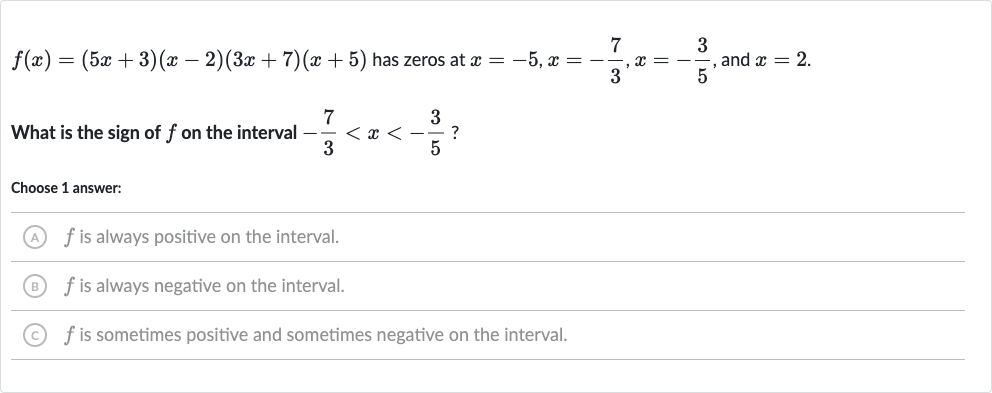Full solution
Q. has zeros at , and .What is the sign of on the interval ?Choose answer:(A) is always positive on the interval.(B) is always negative on the interval.(C) is sometimes positive and sometimes negative on the interval.
- Identify Zeros: has zeros at , , , and . To determine the sign of on the interval \frac{-7}{3} < x < \frac{-3}{5}, we need to test a value within this interval.
- Choose Test Value: Choose a test value between and , let's pick . Substitute into to determine the sign.
- Substitute and Determine Sign: . Since is positive, is positive for our test value.
- Continuity and Sign: Since is a polynomial function, it is continuous and will not change sign between zeros unless it crosses a zero. There are no zeros of between and , so must be positive throughout this interval.
More problems from Domain and range of quadratic functions: equations
QuestionGet tutor help

